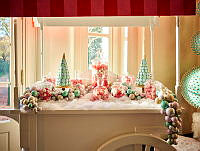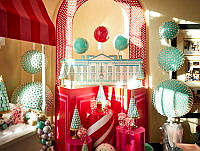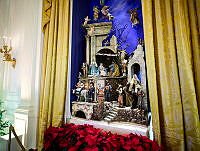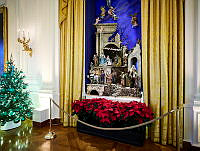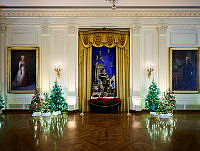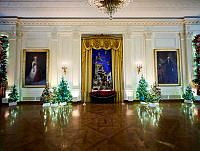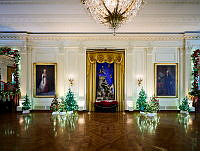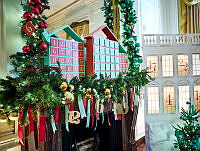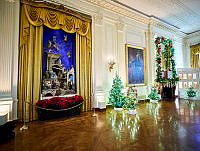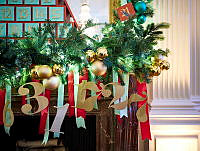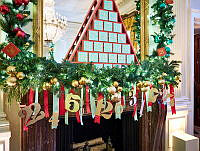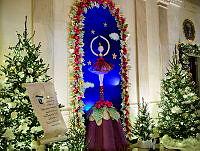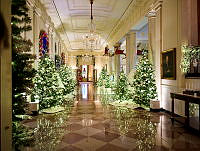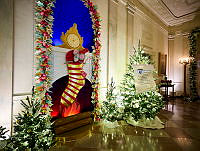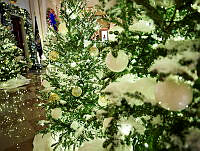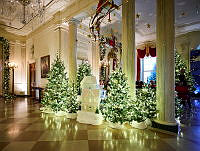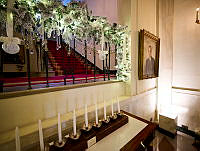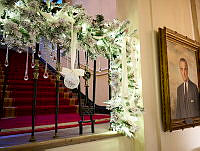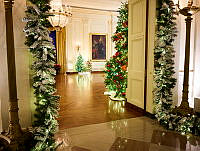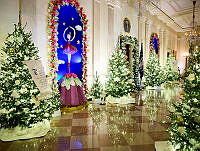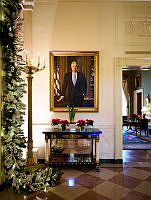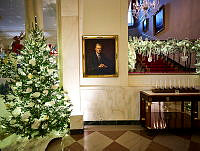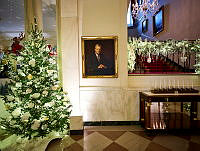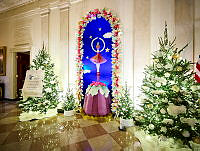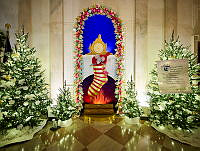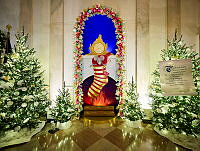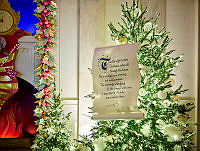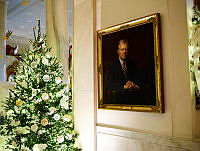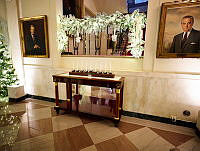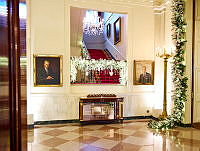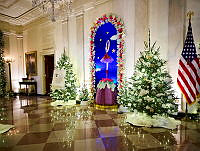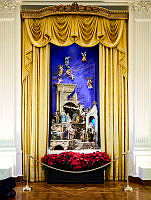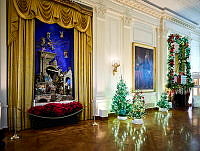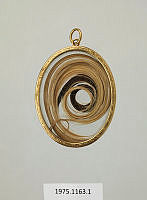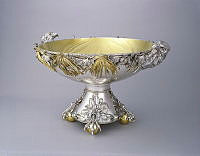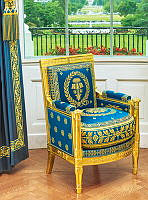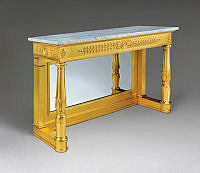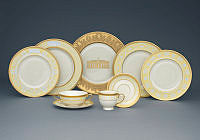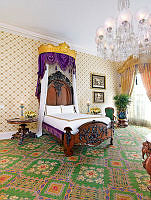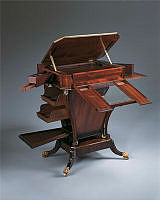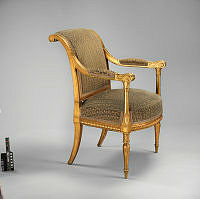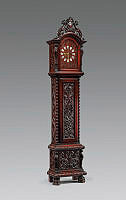An Essay on "The Grand Illumination" by Peter Waddell
Sunset of the Gaslight Age, 1891
Copyright © White House Historical Association. All rights reserved under international copyright conventions. No part of this article may be reproduced or utilized in any form or by any means, electronic or mechanical, including photocopying, recording, or by any information storage and retrieval system, without permission in writing from the publisher. Requests for reprint permissions should be addressed to books@whha.org

Peter Waddell, The Grand Illumination, oil on canvas, 55 x 73.
Peter Waddell for the White House Historical AssociationPerhaps the most legendary object in the White House past, apart from the Lincoln bed and Gilbert Stuart's portrait of George Washington, was removed a century ago and later destroyed. It was the Tiffany screen of colored glass that stood in the Entrance Hall a mere nineteen years, from 1883 until 1902. This popular expression of the Aesthetic taste in design was commissioned by President Chester A. Arthur from Louis Comfort Tiffany, the thirty-four year old artist then very current in New York art circles. It was a foremost symbol of Victorian taste.
Trained as a painter, Tiffany became interested in the relatively new opalescent glass, an innovative coloration created by introducing metal oxides to molten glass. With the White House as his showcase, he emerged from the project a famous man. President Arthur succeeded from vice president to president, following the assassination of President James A. Garfield in 1881. He did not fit the hometown Garfield image at all, being a stylish widower from Manhattan. The new president celebrated the difference by turning to Tiffany to make the White House shine.
The glass screen was dazzling beyond all the rest of the Tiffany alterations. He replaced with opalescent glass the plain panes in an existing architectural screen that had crossed the hall since 1837 to block drafts. Peter Waddell found most details of the screen well-documented in the National Archives, but not the actual colors of the glass. In deciding the colors, he studied Tiffany glass, but in particular a window Tiffany had installed at Saint John's Church in Washington, D.C., in memory of Arthur's late wife Nell.
We visit the Entrance Hall in the year 1891, when President Benjamin Harrison converted lighting in the White House from gas to electricity. Ike Hoover, electrician, has switched a wall lamp, which erupts with harsh electric light. While the new light did not impact the screen excessively, in the rooms it negated Tiffany's effects, obliterating the iridescent paint colors. Unlike the painted surfaces, which were meant to reflect and absorb light, the screens opalescent glass was made primarily to filter light, as it does here at the end of day, when the cold, early evening light from the north is warmed to deep, rich colors, as it passes through the screen.











